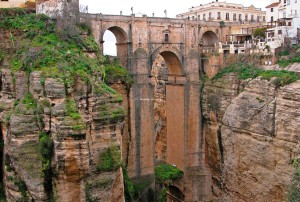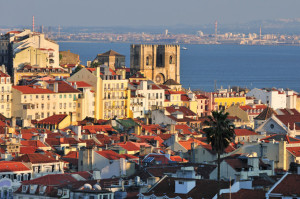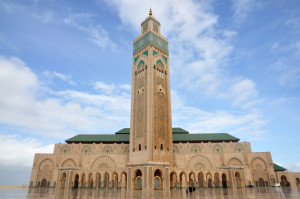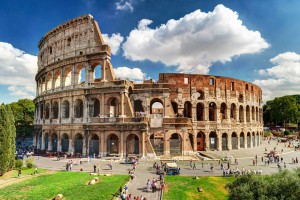Spain
In the south west of Europe
Spain covers an area of 505,955 km2, which places it amongst the fifty largest countries in the world.
The largest part of the territory is located in the Iberian Peninsula, the remainder, approximately 12,500 km2, are islands, -Balearics and the Canary Islands- plus 32 km2 that are accounted for by the cities of Ceuta and Melilla, situated on the coast of Africa. The situation of the Iberian Peninsula in the extreme south west of Europe and only 14 km away from the African continent, endows Spain with a great strategic value: projecting into the Mediterranean on one side and acting as an intersection on the path to Africa and America on the other. The fact that a large part of Spain is peninsular also explains the length of its coastline, which runs along the Atlantic Ocean and the Mediterranean Sea. As a result of its position, the climate ranges from the mild oceanic climate in the North, to the continental Mediterranean in the center and the Mediterranean in the East and South, factors which combine to create a wet Spain in the North and mountainous areas, green Spain with luxuriant forests and a dry Spain in the Mediterranean.
Spain: a country of great and varied landscape and geographical wealth.
Portugal
Situated in the extreme south-west of Europe, just a few hours from any of the other European capitals, Portugal attracts visitors from all over the world. Come and discover the charms of this country too. This is a country that has the oldest borders in Europe, with an exceptional range of different landscapes just a short distance away, lots of leisure activities and a unique cultural heritage, where tradition and modernity blend together in perfect harmony. Its superb cuisine, fine wines and hospitable people make this a tourist paradise of the highest quality. With its mild climate, 3000 hours of sunshine per year and 850 kms of splendid beaches bathed by the Atlantic Ocean, Portugal is the perfect holiday destination all year round.
Morocco
Religious tolerance, Andalusian heritage, and the prosperity of these dynasties created treasures which now constitute the cultural, artistic and architectural richness of the country. Morocco has been influenced by several civilizations since Antiquity. Each has marked the land with an indelible imprint. This has produced an incomparable historical heritage. Inhabited for more than 300,000 years, Morocco is a meeting place for civilizations which are open to others, with their own strong identity. The variety of Moroccan landscapes is incredible. You move from summits to plains, from the greenest vegetation to the most complete aridity.
Europe
Italy counts 50 UNESCO World Heritage Sites within its borders, the most of any country on the World Heritage List. Italy’s World Heritage Sites are well-known. The Dolomites; The City of Verona; Ferrara and the Po River Delta; the Historic Centers of San Gimignano, Florence and Rome; Hadrian’s Villa and the Villa D’Este at Tivoli; the archaeological area of Pompeii, Herculaneum and Torre Annunziata; the Sassi (rupestrian architecture and churches) of Matera; the Amalfi Coast and the Aeolian Islands are just some among many others.
Italy, a land of art and history.
Central Europe
Central Europe is a region forming the heart of Europe. Austria The Alps, historic cities and villages, and a wealth of cultural attractions, Austria really is the country of the Arts. Czech Republic Beautiful forests and mountains, and some of the most notable architectural attractions in Europe, bordered by the Bohemian Forest Hungary A beautiful and untouched country with lush forests and breath-taking lakes.





